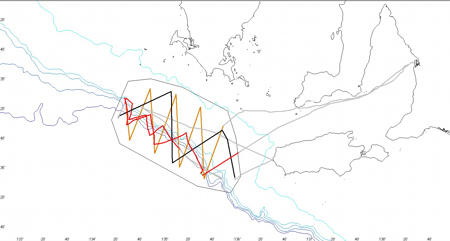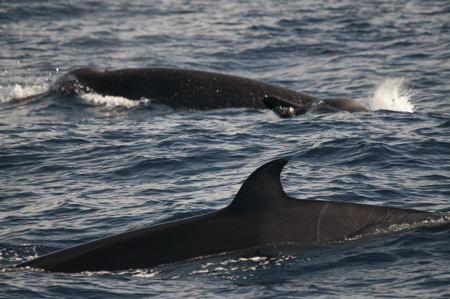In April/May this year, MCR team members Olly Boisseau and Miriam Romagosa travelled to South Australia to lead a marine mammal survey with IFAW’s Oceania office. The study took place in an area that the Australian Government has leased for oil and gas exploration, but no systematic studies for marine mammals have previously been conducted there during the southern autumn. This particular area is situated in the eastern Great Australian Bight (GAB), an area of upwelling where cool nutrient-rich waters from the deep rise to the surface. The southern autumn is considered a shoulder season between aggregations of feeding blue whales visiting in the summer and breeding southern right whales in the winter; therefore, our study was planned to provide baseline data on the cetaceans inhabiting this poorly understood area during this time of year.

In addition to Miriam and Olly from the MCR team, the team comprised 11 others: five crew, four volunteers, one videographer and IFAW’s marine campaigner. The research was conducted from the SV Pelican, a 19 m catamaran. The survey lasted for 13 days and covered 15,130 km2 including continental shelf, slope and abyssal habitats. Working in the Southern Ocean means that bad weather is almost guaranteed but the survey was able to proceed despite big swells and high winds for much of the time. The team had sightings of pilot whales, bottlenose dolphins, common dolphins and seals, even though conditions were not ideal. Fortunately, the 300 m hydrophone towed behind Pelican also detected sperm whales, pilot whales and dolphins whatever the weather we encountered. The highlight of the survey was the last day when calm sea conditions prevailed and the team were fortunate to spot three Shepherd’s beaked whales, a very rarely-seen species only sighted alive at sea on fewer than 10 occasions worldwide. These magnificent creatures from the deep came within 50 m of the boat, allowing the team to take photographs which in turn allowed us to identify this extremely rare species. To the delight of the team, we were even able to determine the gender of one animal; a tooth was clearly visible in his jaw, a feature diagnostic of male beaked whales.

The results from this survey highlight the importance of the eastern GAB for many other species in addition to visiting blue and right whales. Indeed, many of the species encountered may be resident year round and thus this area may represent a critical habitat for an assemblage of species. The majority of acoustic detections and sightings were made around the shelf edge slope within the proposed seismic survey area. As many of the species we encountered are deep diving species vulnerable to anthropogenic sounds, there is growing concern for the effects of ocean noise on marine life in the relatively pristine waters of South Australia.
The survey report can be downloaded here.

Sorry, comments are closed for this post.